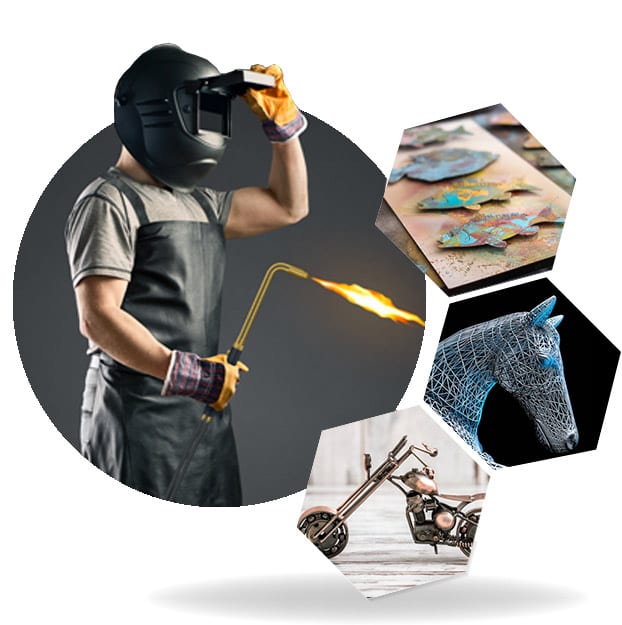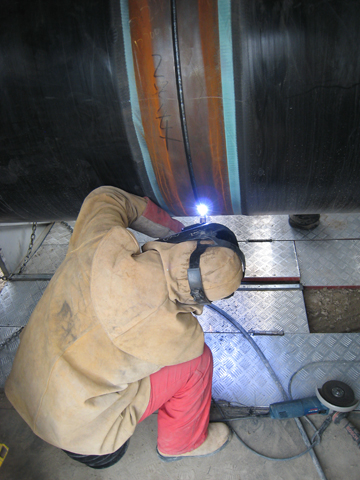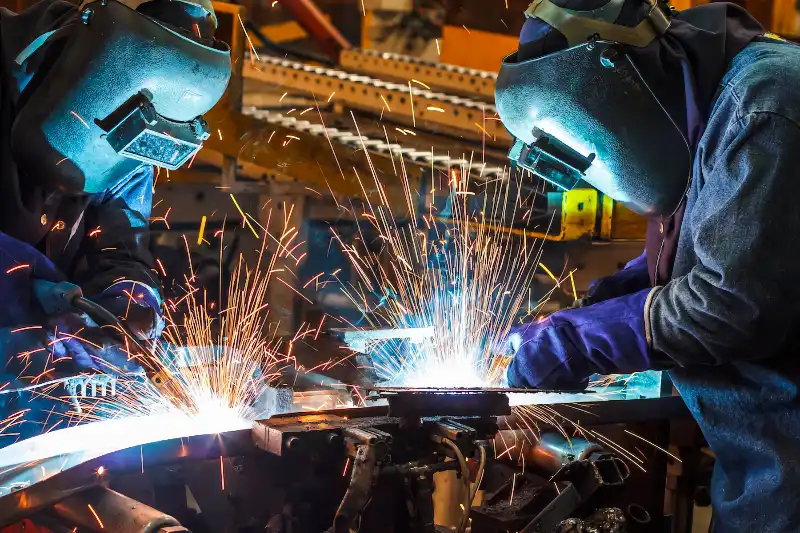Common Welding Repair Work Issues and Just How to Address Them Efficiently
Welding repair services commonly experience a variety of concerns that can endanger the stability of the final item. Common issues consist of inadequate infiltration, porosity, and misalignment, to name a few. Each issue provides one-of-a-kind difficulties that require particular approaches for resolution. Recognizing these problems is important for welders intending to boost their outcomes and abilities. This conversation will explore these common welding repair service problems and effective approaches to resolve them.
Poor Penetration
Poor penetration happens when the weld metal stops working to completely fuse with the base material, leading to weak joints and prospective architectural failures. This issue usually stems from not enough heat input, incorrect electrode angle, or improper welding rate. Welders may run into inadequate infiltration because of a miscalculation of the required parameters for a details material thickness or type. Furthermore, contamination on the base material's surface can impede effective bonding, intensifying the problem. To resolve inadequate infiltration, welders need to guarantee proper settings on their tools and maintain a clean job surface. Regular evaluation of welds is advised to identify any type of shortages early, enabling timely improvements and the avoidance of endangered architectural integrity in bonded assemblies.
Porosity
Porosity is an usual problem in bonded joints that manifests as little gas bubbles entraped within the weld steel. This defect can compromise the integrity of the weld, bring about decreased stamina and possible failing under stress and anxiety. Montana Mobile Welding and Repair Welding. Porosity generally emerges from contamination, moisture, or improper welding techniques, which enable gases to leave into the liquified weld pool. To deal with porosity, welders must assure appropriate surface preparation, maintain a tidy workplace, and use ideal welding criteria. Additionally, selecting the right filler product and shielding gas can mitigate gas entrapment. Normal inspection and screening of welds can assist recognize porosity early, assuring prompt rehabilitative actions are taken, consequently maintaining the top quality and integrity of the bonded structure
Misalignment
Imbalance in welding can develop from various factors, consisting of incorrect setup and thermal growth. Understanding the root creates is important for efficient resolution. Several improvement strategies are available to straighten components and ensure structural honesty.
Reasons for Misalignment
Welding misalignment typically comes from a selection of underlying issues that can jeopardize architectural honesty. One primary cause is incorrect fit-up of parts prior to welding, which can result in gaps and irregular surfaces. Variants in thermal expansion during the welding process can likewise result in distortion, especially if the materials being joined have various coefficients of growth. Furthermore, insufficient fixturing and clamping might stop working to hold elements safely in position, leading to motion throughout welding. Badly conserved devices, including welding makers and devices, might present disparities in the weld grain, more adding to misalignment. Operator mistake, stemming from not enough training or experience, can also play a substantial function in producing misaligned welds.

Improvement Strategies Readily Available
Dealing with imbalance successfully requires a mix of rehabilitative techniques tailored to the particular concerns at hand. One usual technique is making use of fixtures or jigs to hold components in the proper position throughout welding, guaranteeing regular alignment. Additionally, pre-heating the products can help in reducing distortion and enhance fit-up. For significant imbalance, mechanical realignment strategies, such as using hydraulic jacks or clamps, can be employed to remedy the setting prior to welding. Post-weld warmth therapy may additionally be needed to eliminate anxieties brought on by misalignment. Careful inspection and change throughout the arrangement stage can stop misalignment problems from coming to be substantial issues, promoting a smoother welding process and boosting general architectural honesty.
Distortion
Distortion is an usual obstacle in welding that can arise from different variables, consisting of unequal cooling and heating. Recognizing the causes of distortion is vital for carrying out reliable prevention techniques. Addressing this issue not just improves structural integrity but also boosts the total high quality of the weld.
Reasons for Distortion
When based on the extreme warm of welding, materials commonly go through adjustments that can bring about distortion. This sensation largely emerges from thermal expansion and contraction during the welding procedure. As the weld location heats up, the product increases; upon air conditioning, it gets, which can produce interior stress and anxieties. Furthermore, uneven heating throughout a workpiece can worsen these tensions, resulting in warping or bending. The kind of material also plays a considerable function; metals with differing thermal conductivity and coefficients of growth may react differently, bring about unpredictable distortions. In addition, inadequate joint design and poor fixturing can add to imbalance throughout welding, raising the probability of distortion. Understanding these causes is vital for efficient welding repair work and avoidance methods.
Prevention Techniques
Efficient avoidance techniques for distortion during welding emphasis on controlling warmth input and guaranteeing proper joint layout. Keeping a constant heat input aids to lessen thermal development and tightening, which can bring about distortion. Making use of methods such as pre-heating the workpiece can additionally decrease the temperature gradient, promoting consistent home heating. Additionally, choosing ideal joint styles, such as T-joints or lap joints, can improve stability and lower stress and anxiety concentrations. why not look here Implementing appropriate fixturing to safeguard the work surfaces in position even more aids in preserving alignment throughout the welding procedure. Ultimately, staggered welding series can distribute warmth extra uniformly, stopping localized distortion. By using these techniques, welders can greatly reduce the possibility of distortion and boost the total top quality of their welds.
Breaking
Cracking is a typical problem run into in welding repair services, often resulting from various aspects such as incorrect air conditioning prices, product selection, or insufficient joint prep work. The event of splits can significantly endanger the integrity of the weld, causing possible failures throughout operation. To address this concern, welders must initially assess the root causes, ensuring that materials work and properly selected for the certain application. In addition, managing the cooling rate during the welding process is necessary; rapid cooling can cause anxiety and result in breaking. Proper joint design and preparation also add to reducing the threat. Applying these techniques can enhance weld quality and resilience, inevitably reducing the possibility of cracking in completed weldments.

Incomplete Combination
A considerable concern in welding repair work is incomplete combination, which happens when the weld metal does not effectively bond with the base material or previous weld passes - Belgrade Welding. This issue can lead to weak points in the joint, potentially compromising the honesty of the welded framework. Aspects adding to incomplete combination consist of inadequate warm input, inappropriate welding strategy, and contamination of the surface areas being signed up with. To address this concern properly, welders ought to ensure correct pre-weld cleansing and surface area prep work, along with readjust their welding parameters to accomplish adequate penetration and fusion. Regular assessment during the welding process can likewise aid recognize incomplete blend early, enabling timely corrective procedures to improve the overall high quality of the weld
Overheating
While welding repair work can boost architectural integrity, overheating provides a considerable challenge that can result in material deterioration. Extreme warmth throughout welding can modify the mechanical properties of steels, resulting in reduced strength, raised brittleness, and warping. This sensation is especially important in high-stress applications where structural dependability is paramount. Recognizing overheating can include aesthetic inspections for discoloration or distortion, as well as monitoring temperature during the welding process. To minimize the threats associated with overheating, welders need to utilize proper techniques, such as controlling warmth input, adjusting traveling rate, and using appropriate filler products. Additionally, applying pre- williams welding and post-weld warm treatments can assist recover material properties and boost the total quality of the repair, making certain long-lasting efficiency and safety and security.
Regularly Asked Questions
What Are the Typical Signs of a Welding Problem?

Exactly How Can I Test My Welds for Top quality?
To test welds for quality, one can use aesthetic examinations, ultrasonic testing, and radiographic approaches. Each strategy guarantees architectural stability, determines defects, and validates adherence to defined standards, inevitably enhancing the reliability of the welded joints.
What Security Preventative Measures Should I Take While Welding?
When welding, one ought to prioritize safety and security by using suitable personal protective tools, ensuring appropriate ventilation, safeguarding combustible materials away, maintaining a clean office, and recognizing surroundings to prevent crashes and injuries.
Can I Fix a Weld Without Renovating the Entire Joint?
Fixing a weld without renovating the whole joint is feasible, relying on the damage (Fabrication). Techniques such as grinding, adding filler product, or using a welding procedure can effectively resolve specific problems while preserving the bordering framework
What Equipment Are Necessary for Effective Welding Fixes?
Crucial devices for effective welding fixings consist of a welding maker, cord brush, mill, protective equipment, clamps, and filler products. Each tool plays an essential navigate to this site function in ensuring high quality and safety and security throughout the fixing process. Porosity commonly emerges from contamination, wetness, or inappropriate welding techniques, which enable gases to get away into the molten weld swimming pool. Inadequately maintained devices, including welding devices and devices, may present incongruities in the weld grain, additional contributing to misalignment. When subjected to the extreme warm of welding, products usually go through changes that can lead to distortion. Cracking is a common concern come across in welding repair work, frequently resulting from various factors such as inappropriate cooling rates, product choice, or poor joint prep work. A significant concern in welding repair work is insufficient combination, which happens when the weld metal does not appropriately bond with the base material or previous weld passes.